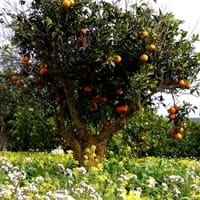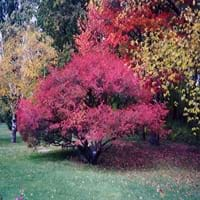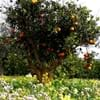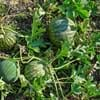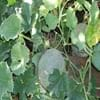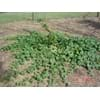Life Span
Perennial
Perennial
Origin
Hybrid origin
Europe, Western Asia
Types
Minneola, Nova, Orlando
Euonymus fortunei, Euonymus alatus, Euonymus europaeus
Number of Varieties
Not Available
Habitat
Hillside, Low Elevation
Dappled Shade, Shady Edge, Sunny Edge, Woodland Garden
USDA Hardiness Zone
9-11
4-7
Sunset Zone
H1, H2, 8, 9, 12, 13, 14, 15, 16, 17, 18, 19, 20, 21, 22, 23, 24
1a, 1b, 2a, 2b, 3a, 3b, 4, 5, 6, 7, 8, 9, 14, 15, 16
Habit
Oval or Rounded
Upright/Erect
Flower Color
White
Yellow green
Flower Color Modifier
Bicolor
Not Available
Fruit Color
Orange, Orange Red
Pink, Purple, Red
Leaf Color in Spring
Dark Green
Green
Leaf Color in Summer
Dark Green
Green
Leaf Color in Fall
Dark Green
Red
Leaf Color in Winter
Light Green
Not Available
Leaf Shape
Ovate
Lanceolate to elliptical
Plant Season
Spring, Summer, Fall, Winter
Fall
Sunlight
Full Sun, Partial Sun
Full Sun, Partial Sun, Partial shade
Type of Soil
Loam, Sand
Clay, Loam, Sand
The pH of Soil
Acidic, Neutral, Alkaline
Acidic, Neutral, Alkaline
Soil Drainage
Well drained
Well drained
Bloom Time
Early Spring, Spring, Late Winter
Late Spring
Tolerances
Drought
Drought
Where to Plant?
Container, Ground, Pot
Ground, Pot
How to Plant?
reseeds
Cuttings, Seedlings
Plant Maintenance
Medium
Medium
Watering Requirements
Requires regular watering
Average Water Needs, Do Not over Water
In Summer
Lots of watering
Lots of watering
In Spring
Moderate
Moderate
In Winter
Average Water
Average Water
Soil pH
Acidic, Neutral, Alkaline
Acidic, Neutral, Alkaline
Soil Type
Loam, Sand
Clay, Loam, Sand
Soil Drainage Capacity
Well drained
Well drained
Sun Exposure
Full Sun, Partial Sun
Full Sun, Partial Sun, Partial shade
Pruning
Remove damaged leaves, Remove dead branches, Remove dead leaves
Remove damaged leaves, Remove dead branches, Remove dead leaves
Fertilizers
All-Purpose Liquid Fertilizer
organic fertlizers
Pests and Diseases
Red blotch
Powdery mildew, Vine weevils
Plant Tolerance
Drought
Drought
Flowers
Showy
Insignificant
Flower Petal Number
Single
Single
Fragrant Bark/Stem
Yes
No
Foliage Texture
Medium
Medium
Foliage Sheen
Glossy
Glossy
Attracts
Birds, Butterflies
Birds
Allergy
Itchiness, Oral Allergy
Mild Allergen
Aesthetic Uses
Bonsai, Showy Purposes
Showy Purposes
Beauty Benefits
Not Available
Not Available
Environmental Uses
Air purification
Air purification
Medicinal Uses
Abdominal Disease, Digestion problems
Alterative, Hepatic, Laxative, Purgative, Tonic
Part of Plant Used
Fruits
Bark, Seeds, Wood
Other Uses
Added to salads
Edible yellow dye is obtained, Used as essential oil, Yields a volatile oil that is used in soap making
Used As Indoor Plant
Yes
Yes
Used As Outdoor Plant
Yes
Yes
Garden Design
Container, Edible, Fruit / Fruit Tree, Screening / Wind Break, Topiary / Bonsai / Espalier
Hedges, Screening, Wind Break
Botanical Name
CITRUS x tangelo
EUONYMUS europaeus 'Aldenhamensis'
Common Name
Tangelo
Spindle Tree, Common Spindle, European Spindle
In Hindi
Tangelo
Spindle Tree
In German
Minneola (Zitrusfrucht)
Spindelbaum
In French
Tangelo
Spindle Arbre
In Spanish
Tangelo
Árbol del husillo
In Greek
Tangelo
ατράκτου Δέντρο
In Portuguese
fruta cítrica formada pelo cruzamento de pomelo e tangerina
Árvore spindle
In Polish
Tangelo
Wrzeciono Drzewo
In Latin
Tangelo
Ligno colos
Phylum
Streptophyta
Magnoliophyta
Class
Magnoliopsida
Magnoliopsida
Order
Sapindales
Celastrales
Family
Rutaceae
Celastraceae
Clade
Angiosperms, Eudicots, Rosids
Angiosperms, Eudicots, Rosids
Tribe
Not Available
Euonymeae
Subfamily
Aurantioideae
Celastroideae
Number of Species
Not Available
Not Available
Season and Care of Tangelo and Spindle Tree
Season and care of Tangelo and Spindle Tree is important to know. While considering everything about Tangelo and Spindle Tree Care, growing season is an essential factor. Tangelo season is Spring, Summer, Fall and Winter and Spindle Tree season is Spring, Summer, Fall and Winter. The type of soil for Tangelo is Loam, Sand and for Spindle Tree is Clay, Loam, Sand while the PH of soil for Tangelo is Acidic, Neutral, Alkaline and for Spindle Tree is Acidic, Neutral, Alkaline.
Tangelo and Spindle Tree Physical Information
Tangelo and Spindle Tree physical information is very important for comparison. Tangelo height is 460.00 cm and width 300.00 cm whereas Spindle Tree height is 370.00 cm and width 900.00 cm. The color specification of Tangelo and Spindle Tree are as follows:
Tangelo flower color: White
Tangelo leaf color: Dark Green
Spindle Tree flower color: Yellow green
- Spindle Tree leaf color: Green
Care of Tangelo and Spindle Tree
Care of Tangelo and Spindle Tree include pruning, fertilizers, watering etc. Tangelo pruning is done Remove damaged leaves, Remove dead branches and Remove dead leaves and Spindle Tree pruning is done Remove damaged leaves, Remove dead branches and Remove dead leaves. In summer Tangelo needs Lots of watering and in winter, it needs Average Water. Whereas, in summer Spindle Tree needs Lots of watering and in winter, it needs Average Water.
